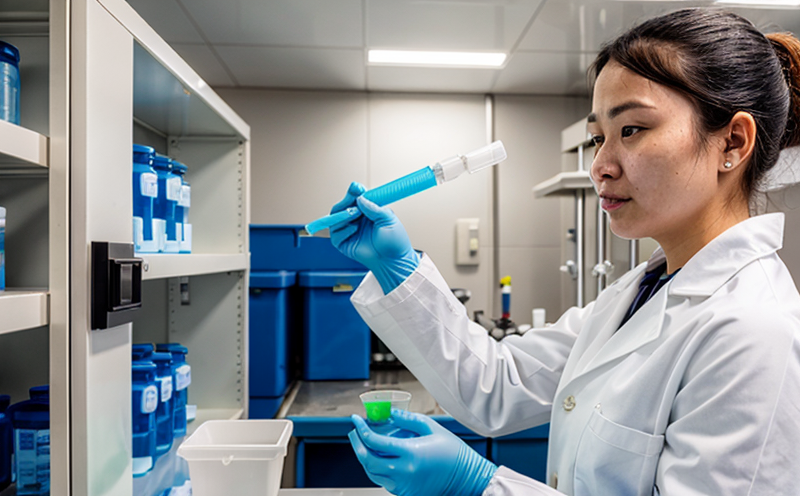USP Real Time Microbial Stability Testing
The USP Real Time Microbial Stability Testing is a critical process within pharmaceutical manufacturing and quality assurance. This testing ensures that products remain sterile throughout their shelf life, which is particularly essential for injectable medications and other dosage forms where microbial contamination can pose significant health risks.
Microbiological testing under the United States Pharmacopeia (USP) Chapter General Chapter 1115, is designed to assess the potential for microbial growth in pharmaceutical products. This test involves monitoring samples over time to predict shelf life based on real-time data. The aim is not only to maintain product sterility but also to ensure compliance with regulatory standards such as USP and international equivalents like European Pharmacopoeia (Ph. Eur).
The procedure typically starts with the collection of microbial samples from different stages of production, including raw materials, intermediate products, and final formulations. These samples are then incubated under controlled conditions to observe any growth patterns indicative of microbial activity. The real-time aspect ensures that changes in product stability can be detected early, allowing for timely corrective actions if necessary.
One of the key challenges in this testing process is ensuring accurate results while maintaining high throughput. Advanced laboratory techniques and state-of-the-art equipment play a crucial role in achieving reliable outcomes. For instance, automated microbiological systems offer enhanced precision by reducing human error, while advanced software solutions provide real-time data analysis to predict potential issues before they become critical.
Another important aspect is the use of appropriate media and culture techniques tailored specifically for the type of product being tested. This ensures that any detected microorganisms are accurately identified and classified, aiding in effective risk management strategies. The testing protocol must adhere strictly to USP guidelines to ensure consistency across facilities and laboratories.
In summary, real-time microbial stability testing is a cornerstone of pharmaceutical quality assurance efforts. By leveraging cutting-edge technology and adhering closely to regulatory requirements, manufacturers can safeguard patient safety while maintaining compliance with industry standards.
Benefits
- Predictive Shelf Life Estimation: Real-time data allows for more accurate prediction of a product's shelf life, reducing the risk of microbial contamination.
- Compliance Assurance: Ensures adherence to USP and other relevant regulatory guidelines, which is crucial for maintaining market access and trust.
- Risk Management: Early detection of potential issues helps in implementing necessary corrective actions promptly.
Why Choose This Test
Choosing USP Real Time Microbial Stability Testing offers several advantages over traditional testing methods. Firstly, it provides a more comprehensive understanding of how products behave under various storage conditions, which is invaluable for optimizing manufacturing processes and extending shelf life.
Secondly, this approach enhances regulatory compliance by offering clear evidence of product stability throughout its lifecycle. Compliance officers can rest assured that their products meet stringent quality standards set forth by governing bodies like the FDA and EMA. Additionally, it allows for better resource allocation within R&D departments since resources are directed towards areas where they are most needed.
Lastly, choosing this test ensures a safer product for consumers. With increased awareness about potential risks associated with microbial contamination in pharmaceuticals, ensuring sterility is more important than ever. By opting for real-time testing, manufacturers can contribute significantly to public health by delivering consistently safe products.
Use Cases and Application Examples
- Intravenous Solutions: For highly sensitive intravenous solutions where even minimal microbial presence could lead to severe complications, real-time testing is essential for maintaining sterility.
- Dry Powders: Testing dry powders helps in understanding how changes in humidity affect their stability and shelf life.
- Lotions and Creams: Monitoring lotion and cream samples provides insights into whether ingredients interact unfavorably over time, leading to product degradation.
These examples illustrate just some of the scenarios where USP Real Time Microbial Stability Testing proves invaluable. In each case, early detection through real-time monitoring ensures that manufacturers can make informed decisions about their processes and formulations.





